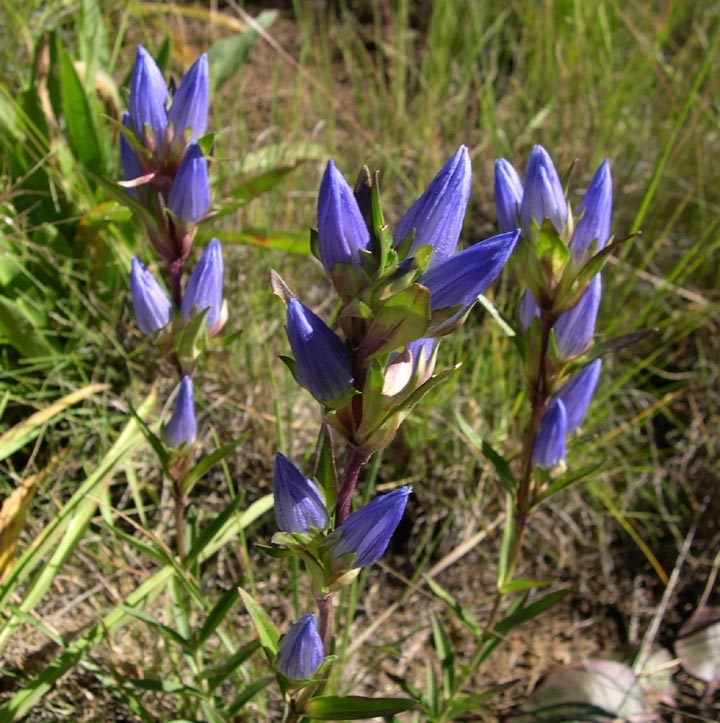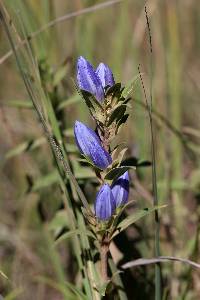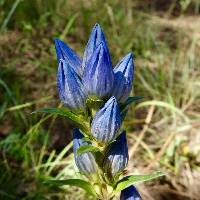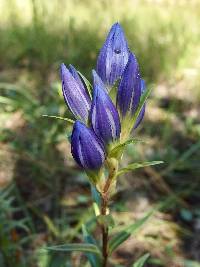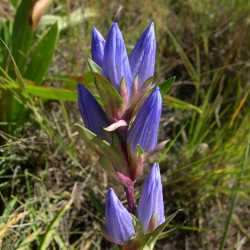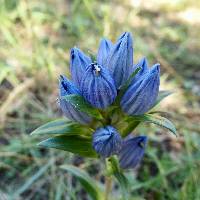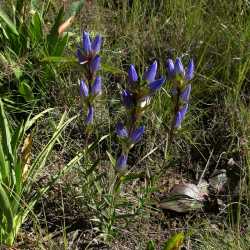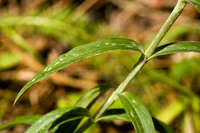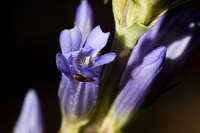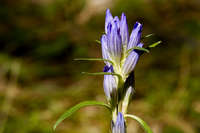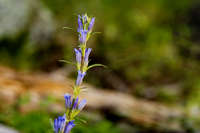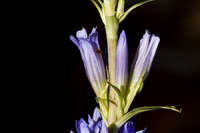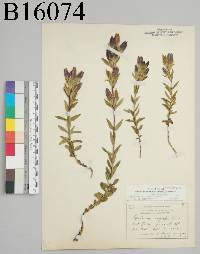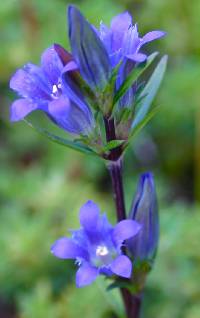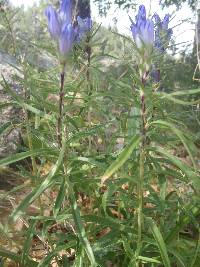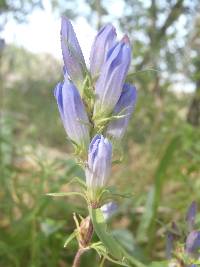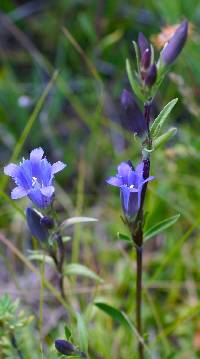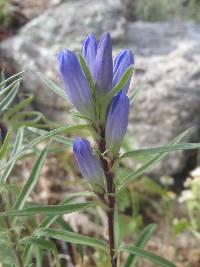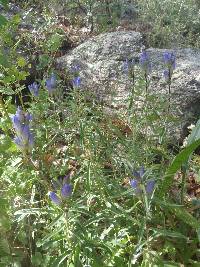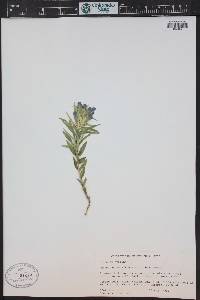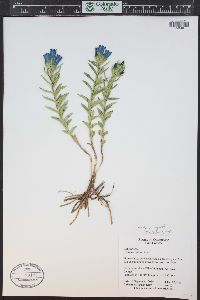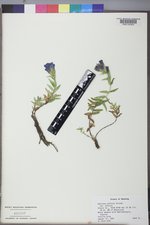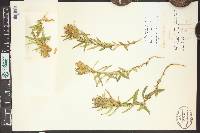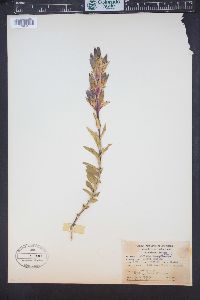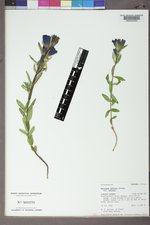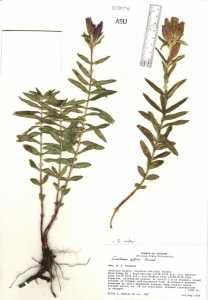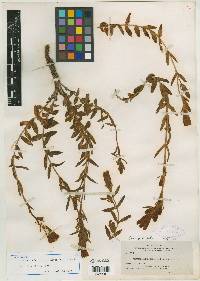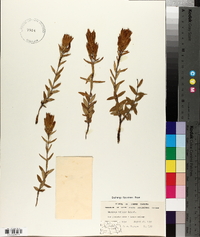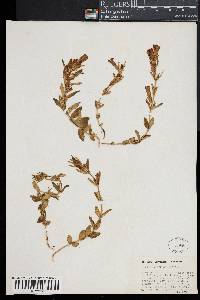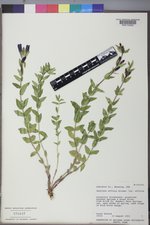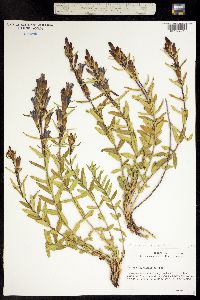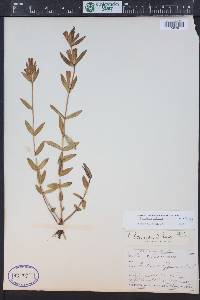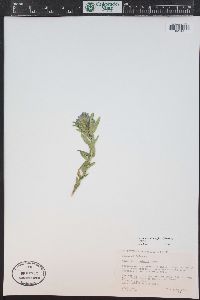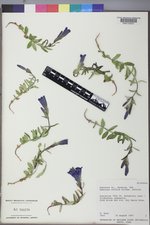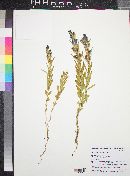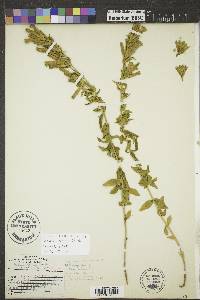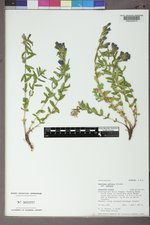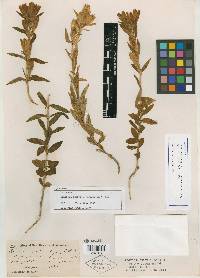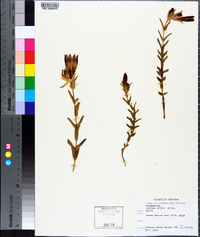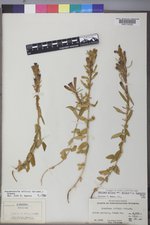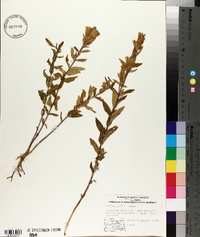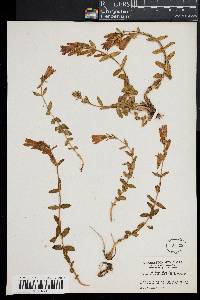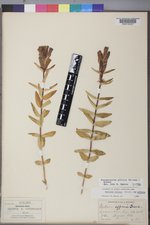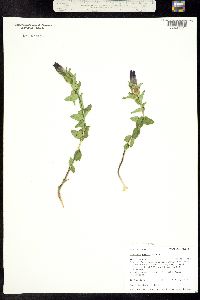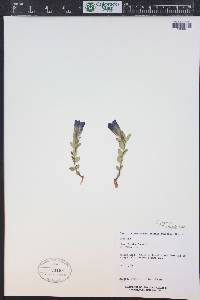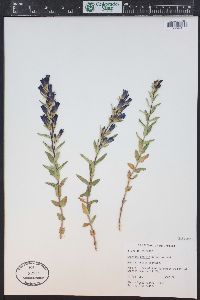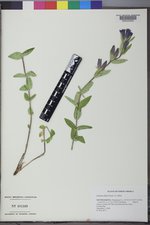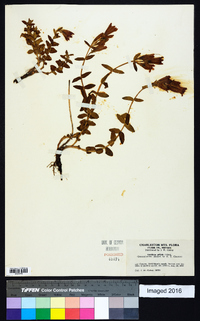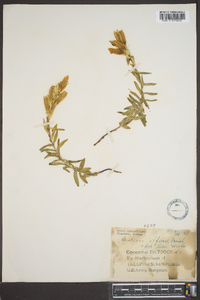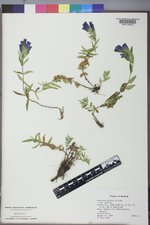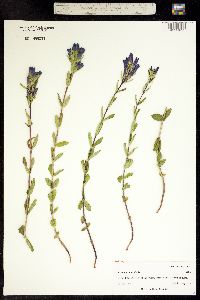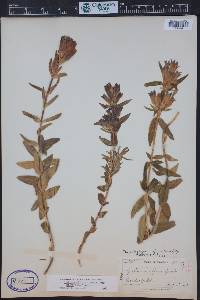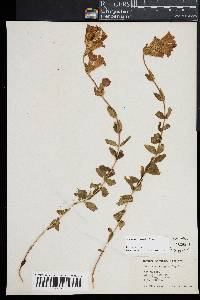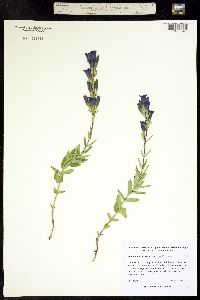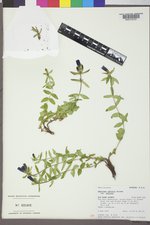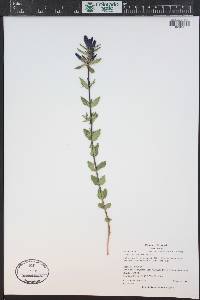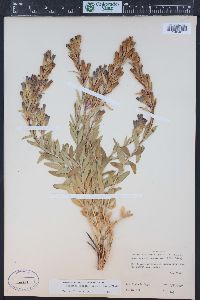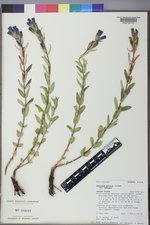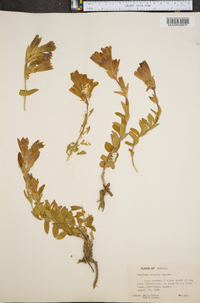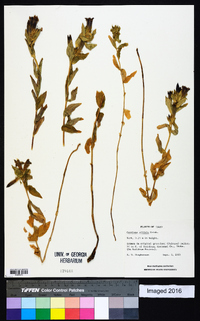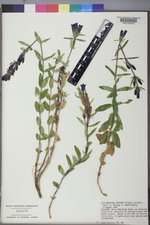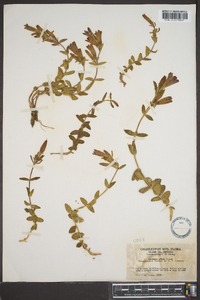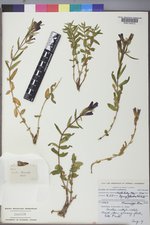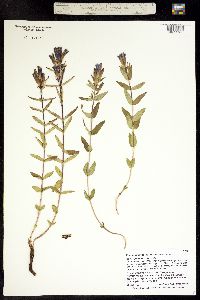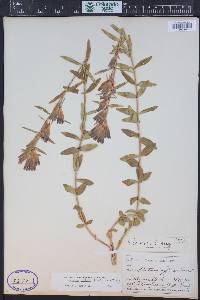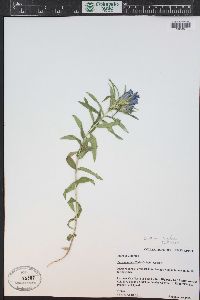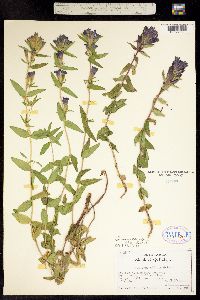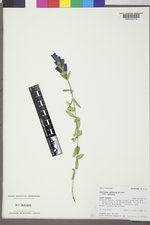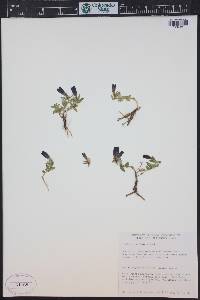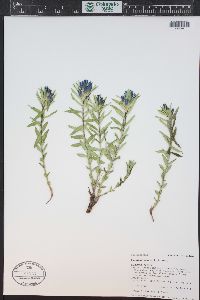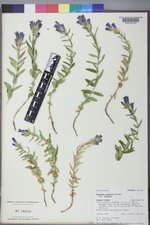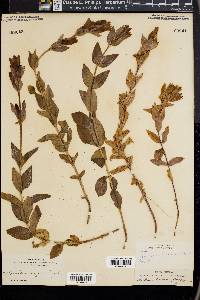Gentiana affinis
|
|
|
|
Family: Gentianaceae
Pleated Gentian, more...Rocky Mountain gentian
[Dasystephana affinis (Griseb.) Rydb., moreDasystephana interrupta (Greene) Rydb., Gentiana affinis var. affinis , Gentiana affinis var. bigelovii (A. Gray) Kusnez., Gentiana affinis var. forwoodii (A. Gray) Kusnez., Gentiana affinis var. major A. Nels. & Kennedy, Gentiana affinis var. ovata A. Gray, Gentiana affinis var. parvidentata Kusnez., Gentiana bigelovii A. Gray, Gentiana forwoodii A. Gray, Gentiana interrupta Greene, Gentiana oregana Engelm. ex A. Gray, Gentiana rusbyi Greene, Pneumonanthe affinis (Griseb.) W.A. Weber, Pneumonanthe bigelovii Greene, Pneumonanthe rusbyi Greene] |
Plant: perennial herb; STEMS 15-35 cm tall, erect or decumbent, densely puberulent or reduced to rows as continuations of leaf margins Leaves: linear-lanceolate to lance-ovate 2.5-4 cm long, 0.5-1 cm wide, puberulent on margins and lower surface of midrib INFLORESCENCE: spicate, the flowers few to many, usually at several nodes, sessile or short pedicellate in the axils of linear-lanceolate bracts that are shorter than the flower Flowers: blue, rarely white, 2.5-3.5 cm long, closely subtended by 2 bracteoles; calyx tube entire or cut along one side, the lobes 9-10 mm long or reduced and obsolete, the margins puberulent; corolla fusiform, remaining closed, the lobes 2.5-7 mm long, the plicae 1-2-lobed, acute to attenuate, 1.2-3 mm long Fruit: cylindric capsules, short-stipitate. SEEDS marginally winged Misc: Open drier mountain meadows and rocky areas; 2300-2900 m (7600-9500 ft); Aug-Oct REFERENCES: Mason, Charles T. 1998 Gentianaceae. J. Ariz. - Nev. Acad. Sci. 30(2): 84. Mason 1998, Kearney and Peebles 1969 Duration: Perennial Nativity: Native Lifeform: Forb/Herb General: Erect or decumbent perennial herb, to 40 cm tall, pubescent, unbranching except at tips when flowering or multiple stems arising from the base, if prostrate, tips of stems turn upwards when flowering, green to maroon, and often appearing in clusters. Leaves: Oblong to lanceolate, opposite, sessile and clasping at the base, to 4 cm long, the margins puberulent. Flowers: Purple-blue or white flowers borne in a spicate inflorescence, several to many in an inflorescence relatively short and dense, sessile or on short pedicels, often more than one per node, buds large and cone-shaped, when in flower, the calyx tube is usually divided into 5 acute tipped lobes, corolla about 4 mm long, with the portion of the corolla in between the petals fringed, sometimes entire, stamens included, anthers yellow. Fruits: Cylindric capsules borne on short pedicels, bearing marginally-winged seeds. Ecology: Found in rocky areas in dry meadows, occasionally in wetlands, from 7,500-9,500 ft (2286-2896 m); flowers August-October. Notes: This lovely plant is recognizable by its opposite, clasping leaves, which form orderly 2-ranked, well-spaced rows up the purple-tinged stem. Leaves are somewhat thick. The bright bluish-purple flowers are sometimes star-shaped, but often can appear to have more petals due to the fringed corolla which lies between the petals. Sometimes on the outside of the corolla, the petals can appear darker than the areas between, giving the flower a striped appearance. Sometimes the flowers have green dots inside. This species has been reported to occur in wetland areas at lower elevations, even down to sea-level in the eastern states. Ethnobotany: The plant was used to treat fainting, and as a snuff for headaches. This species was also used as an antidote against witchcraft, and for ornamental use. Etymology: Gentiana is named after named after Gentius, King of Illyria, who in the 2nd century B.C. found the roots of the herb yellow gentian or bitterwort to have a healing effect on his malaria-stricken troops, while affinis means bordering on or related or similar to. Synonyms: None Editor: LCrumbacher, 2011 [Listed under Gentiana puberulenta J. S. Pringle] The closely related cordilleran sp. G. affinis A. Gray has been reported from n. c. Minn. and Huron Co., Ont. It differs in its smaller cor (mostly 2.5-4 cm) and unstable cal, the lobes variously large or small, commonly unequal, sometimes virtually suppressed, the tube often once or twice cleft especially when the lobes are reduced. The lvs are also a little more definitely scaberulous-margined ±throughout their length. Gleason, Henry A. & Cronquist, Arthur J. 1991. Manual of vascular plants of northeastern United States and adjacent Canada. lxxv + 910 pp. ©The New York Botanical Garden. All rights reserved. Used by permission. |
|
|
|

